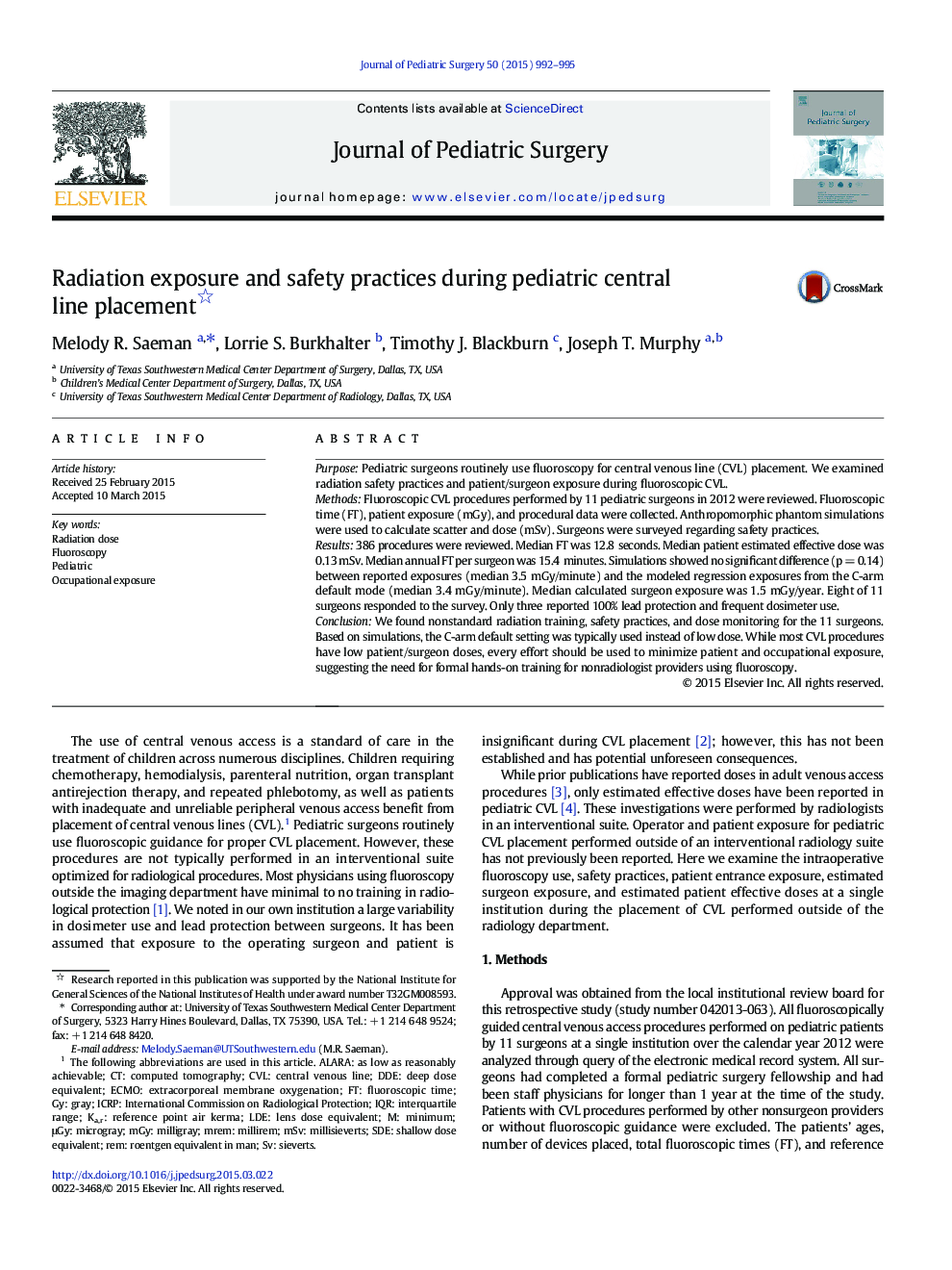| Article ID | Journal | Published Year | Pages | File Type |
|---|---|---|---|---|
| 4155052 | Journal of Pediatric Surgery | 2015 | 4 Pages |
PurposePediatric surgeons routinely use fluoroscopy for central venous line (CVL) placement. We examined radiation safety practices and patient/surgeon exposure during fluoroscopic CVL.MethodsFluoroscopic CVL procedures performed by 11 pediatric surgeons in 2012 were reviewed. Fluoroscopic time (FT), patient exposure (mGy), and procedural data were collected. Anthropomorphic phantom simulations were used to calculate scatter and dose (mSv). Surgeons were surveyed regarding safety practices.Results386 procedures were reviewed. Median FT was 12.8 seconds. Median patient estimated effective dose was 0.13 mSv. Median annual FT per surgeon was 15.4 minutes. Simulations showed no significant difference (p = 0.14) between reported exposures (median 3.5 mGy/minute) and the modeled regression exposures from the C-arm default mode (median 3.4 mGy/minute). Median calculated surgeon exposure was 1.5 mGy/year. Eight of 11 surgeons responded to the survey. Only three reported 100% lead protection and frequent dosimeter use.ConclusionWe found nonstandard radiation training, safety practices, and dose monitoring for the 11 surgeons. Based on simulations, the C-arm default setting was typically used instead of low dose. While most CVL procedures have low patient/surgeon doses, every effort should be used to minimize patient and occupational exposure, suggesting the need for formal hands-on training for nonradiologist providers using fluoroscopy.
